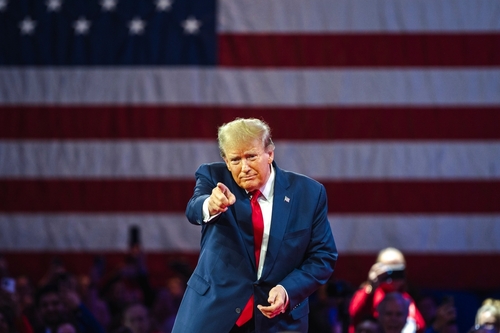
As the 2024 presidential race heats up, Donald Trump’s ability to attract union voters has once again set off alarms within the Democratic Party. With the critical battleground states of Pennsylvania, Michigan, and Wisconsin at the forefront, many Democrats fear Trump could break through the "Blue Wall" as he did in 2016. Recent polls show a tight race between Trump and Vice President Kamala Harris, especially among working-class voters, a demographic where Trump maintains a strong presence despite his party’s traditional anti-union stance.
The withholding of a Teamsters endorsement for Harris—due to internal polling showing Trump gaining traction among union members—has added to these concerns. Union leaders in various industries note that Trump’s message continues to resonate with key parts of the rank-and-file, particularly white, male, working-class voters. Many of these voters, despite Trump’s anti-union policies, are drawn to his populist rhetoric, which they see as addressing their economic frustrations, including high prices and job insecurity in the Rust Belt.
BREAKING: Steamfitters Union member announces 70% of membership support Donald J. Trump for President!
The support is UNPRECEDENTED!pic.twitter.com/y5RZJR3qWo
— Ryan Fournier (@RyanAFournier) September 19, 2024
While Harris and the Democratic Party have long counted on labor support, cracks are beginning to show. Some labor leaders, while supporting Harris publicly, admit to concerns about union members leaning toward Trump, especially after the non-endorsement from the powerful Teamsters union. One pro-Harris union official even referred to it as a "red flag," reminiscent of Hillary Clinton’s struggles to win over union households in 2016, when Trump flipped key Rust Belt states by capitalizing on economic discontent.
The gender gap in this election is another significant factor. While Harris performs well among women, especially white women without college degrees, Trump retains a solid lead among men, particularly non-college-educated white men. This division could play a decisive role in states like Pennsylvania, where older, white working-class voters make up a significant portion of the electorate. According to Pew Research, Trump's appeal among voters without a bachelor’s degree remains strong, with 53% backing him compared to Harris’s 44%.
JUST IN: Teamsters will *not* endorse for president after their member polling gave Donald Trump an overwhelming lead over Kamala Harris.
Electronic Member Poll:
Trump: 59.6%
Harris: 34.0%The decision comes just two days after union leaders and members met… pic.twitter.com/7RuPiO6dU2
— Collin Rugg (@CollinRugg) September 18, 2024
In response to these challenges, Harris has emphasized her pro-union stance and her administration's efforts to support workers. Her campaign has been aggressively targeting key union-heavy regions, including rural and exurban areas in battleground states. In campaign speeches, she has highlighted her commitment to protecting Social Security and Medicare, contrasting this with Trump’s past comments that threatened cuts to these programs. However, some Democrats argue she needs to hammer this point more consistently to win over older voters who might be swayed by Republican messaging on these issues.
On the ground, however, some Democratic operatives remain nervous. Despite public confidence, there is a growing unease that Harris’s campaign isn’t doing enough to counter Trump’s appeal to these key voters. As one Democratic strategist noted, while Harris performs better than most Democrats with non-college-educated white women, the growing gender gap could offset those gains, with men increasingly siding with Trump. This division, they warn, may become even more pronounced as the election nears, particularly in light of Trump's continued dominance with male union voters.
Meanwhile, Trump has focused his campaign on economic issues, tapping into the discontent many union voters feel under the current administration. His messaging frequently centers on inflation, job losses, and economic uncertainty—issues that resonate deeply in regions hit hard by deindustrialization. His campaign's efforts to paint Harris as out-of-touch with the struggles of blue-collar workers have been effective in reinforcing his appeal.
Despite these concerns, Harris retains significant support from major unions, and her campaign is banking on this to help counter Trump's gains. Many labor leaders argue that while some union members may be drawn to Trump, the majority remain loyal to the Democratic Party, particularly those who have benefited from Biden’s pro-labor policies. But with the election just weeks away, the Democratic Party is keenly aware that even small shifts in the union vote could spell disaster in swing states where margins are razor-thin.











